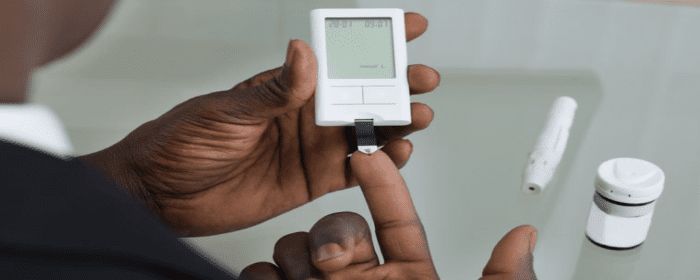
by admin | Oct 4, 2019 | Health Awareness
We already know that eating candy all the time isn’t exactly a health-conscious choice. Most are processed and filled with added sugars, giving it a pretty low nutrition-to-calorie ratio. Yet, every diet should leave room to fulfill once-in-a-while cravings, and Halloween certainly qualifies as a special occasion. If you find yourself yearning for some sweets this October, don’t feel guilty about having a piece of candy. Instead, reach for one of the healthier varieties below, and try to pass on the rest.
The Healthiest Halloween Candy
While these snacks certainly wouldn’t be considered superfoods, they pack a more powerful nutritional punch compared to other options. Here are a few varieties to try:
Peanut M&Ms
M&Ms already have an advantage over other candies: since there are lots of them in a pack, you’re more likely to take your time enjoying them as your snack, thereby fulfilling your craving with just one fun-size portion. If the colorful candies are what you’re craving, go for the peanut variety: the nuts have protein and fiber, which can help keep you fuller longer. And, a fun-size pack clocks in at just 90 calories.
Reese’s Peanut Butter Cups
Reese’s lovers, rejoice: the famous cups make the list of more nutritional candies, thanks to the protein-rich peanut butter. Instead of reaching for the double-cup package, consider purchasing a bag of the single-cup varieties. One cup has 110 calories and 2.5 grams of protein, so it won’t derail your healthy eating habits. Plus, you can distribute the rest to any trick-or-treaters who stop by, as Reese’s are a favorite among kids, too!
Snickers
While you might think that the sugary caramel would land Snickers bars on the “bad” list, this candy is actually lower in sugar and higher in protein than most other types. Once again, we have peanuts to thank for the added nutrition. And, if you choose a fun-size bar, you can indulge in your chocolatey snack with just 80 calories and 9 grams of sugar.
The Least Healthy Halloween Candy
While no food has to be considered completely off-limits, be mindful when snacking on the candies below, as they fall at the very bottom of the list when it comes to nutrition.
Candy Corn
With a whopping 22 grams of sugar in just 15 pieces, candy corn defines “empty calories.” Most candy lovers won’t be too dismayed, however, as survey data shows this Halloween staple is actually one of the most hated varieties of the season. If you’re hungry for something sweet, you could have two Reese’s or Snickers for the amount of sugar in one serving of candy corn.
Airheads
Heavily processed, loaded with artificial flavors and coloring, and exceptionally sugary, there are many reasons why dentists loathe these sticky, nutritionally void candies. Not only do they leave you hungry for more since they have no protein or fiber, but they’re also likely to stick to your enamel, leaving you prone to tooth decay. If you just can’t shake the urge to have one, be sure to rinse and brush afterward.
Smarties
Another sugar-rich snack with empty calories, Smarties have carbohydrates and sugar but lack any meaningful nutrients like fiber or protein. Although one roll is only 25 calories, you’re better off getting your sugar fix with something that has a little more substance.
No matter which Halloween candy is your favorite, the best way to enjoy an indulgence this time of year is to do so without feeling bad about it. Halloween only comes once a year, so snack mindfully and remember to fill up on lean protein, plenty of veggies, and fresh fruit during other meals to balance out your diet. That way, you’ll make sure your body is getting all of the nutrition it needs, and there will be plenty of leeway for a piece of candy here or there.
Those with specific dietary needs, for example, those with Diabetes or considered Pre-Diabetes, should consult with their physician on any foods to ensure their health limits.

by admin | Jan 17, 2019 | Diabetes, Health Awareness
For people with diabetes or pre-diabetes, making healthy
dietary choices is an important aspect of disease management. In particular,
patients should avoid foods that are known to spike blood sugar to keep their
levels within a healthy range. Even for individuals who aren’t diabetic,
limiting or avoiding these foods can help to prevent against serious health
issues, including insulin resistance, obesity, and heart disease. Discover some
of the worst culprits behind elevated blood sugar below.
White Grain Products
While limiting your consumption of grain products may have
certain health benefits, you don’t have to skip rice and bread products altogether.
Simply steer clear of white rice and bread, and opt for whole-grain varieties
instead. In particular, eating white
rice regularly has been associated with an increased risk of type 2
diabetes. This could be a result of the food’s lack of fiber, which helps to
regulate blood sugar levels. White bread, too, is linked to a higher risk of
type 2 diabetes and heart disease.
It’s made from refined flour, which is digested too quickly and can therefore
spike blood sugar.
Red Meat
Too much red meat increases the likelihood of developing
diabetes, especially when it’s processed. Even just two slices of bacon or one
hot dog eaten daily can increase a person’s risk of type 2 diabetes by as much
as 51%.
Red meat has also been linked to higher levels of colorectal cancer and cardiovascular
disease. Researchers suspect that while the saturated fat found in red meat is
one part of the problem, the high level of sodium, which can increase blood
pressure and create insulin resistance, is also to blame.
Fast Food
Fried, greasy foods may look appetizing, but they’re among
the worst offenders on this list. Most varieties have soaring calorie, fat, and
salt counts, all of which spike blood sugar. Salty fast food is particularly
dangerous, as it can increase blood pressure. Because diabetes patients already
face a higher risk of heart
disease, controlling blood pressure is critically important to their health.
Packaged Snacks
Commercially prepared baked goods and other packaged snacks
should be avoided, or at least eaten in moderation. Many of these options have
harmful additives and are high in trans fats, which can impact your cholesterol
and lead to inflammation. Snacking on whole foods, such as a handful of
almonds, vegetable sticks, roasted chick peas, and hard-boiled eggs will
deliver more nutritious benefits in between meals.
Whole-Fat Dairy
As mentioned above, saturated fat can lead to insulin
resistance, or the body’s inability to use insulin for energy. When this
happens, insulin builds up in the blood, leading to higher blood sugar levels.
While not all dairy contributes to this issue, whole milk and other full-fat
dairy products are particularly high in saturated fats. For this reason,
diabetics should choose reduced or nonfat dairy products, including yogurts and
cheeses, whenever possible.

by admin | Aug 13, 2018 | Diabetes, Health Awareness
Making necessary diet changes to keep the blood sugar levels under control is key especially for those with diabetes. Focus on consuming foods that improve your condition and keep your diabetes under control. There are some key foods identified by researchers that are known to improve the condition and reduce the risk:
Blueberries
The tiny berries are a source of daily good carbs and research also shows that eating blueberries improves sensitivity to insulin. The phytochemicals present in blueberries also have special anti-inflammatory properties that are known to reduce the risk of cardiovascular diseases especially the ones associated with diabetes type 2.
Oranges
Incorporate more clementines, grapefruits, and oranges in your daily diet. Research shows that consuming citrus fruits can have a long-term positive effect on blood sugar and cholesterol levels. Research conducted at Harvard University showed that consuming the whole fruit with the pulp rather than just the juice reduces the risks of diabetes type 2. This is due to the presence of their soluble fiber and the compound called hesperidin which is an anti-inflammatory by nature.
Dark Chocolate
Is it possible that a sweet treat like chocolate can control glucose levels? Yes, studies show that high-quality dark chocolate if consumed daily can decrease blood pressure and fasting insulin levels. This is achieved due to the presence of the compound called polyphenols. Try replacing unhealthy carbs with a high-quality low sugar dark chocolate to improve the glucose levels while also satisfying your taste buds.
Chickpeas
Chickpeas are quite well-known for having a low glycemic index, making it very beneficial for diabetes. New research also suggests that consuming legumes has a very therapeutic effect on the body. Compared to others, people who consume a cup of legumes daily showed a significant decrease in blood pressure and hemoglobin values.
Olive Oil
Replacing unhealthy fats with good healthy fats is suggested for everybody but especially for those who have diabetes type 2. Consumption of extra virgin olive oil has been proven to be associated with the decreased risk of diabetes and improves glucose levels because of its anti-inflammatory properties. Try to incorporate olive oil as much as possible in your diet like including it as a dressing for your salads.
Plant-Based Meals
It is observed that vegetarians have a lower risk of diabetes 2 development. A study published in 2012 showed that a diet that is mainly centered around fresh fruits, nuts, vegetables, and legumes has a major positive effect on people who are diabetic. Some participants who strictly followed this diet showed a significant decrease in hemoglobin type A1, blood pressure, HDL levels, and triglycerides. Almost 60% of the participants resulted with glucose levels within the normal range.
Green Vegetables
Diabetes patients who had a high intake of non-starchy leafy green vegetables showed a significant decrease in the levels of hemoglobin and risk of cardiovascular diseases. Advanced research is being carried out to see whether these effects were specifically due to the presence of vitamins A, C, and E in the dense green leafy vegetables. It is also observed that best results were obtained when people consumed a minimum of 200 grams of vegetables daily. This included around 70g of green vegetables.
Nuts and Peanut Butter
Having 5 servings of nuts a week showed a major reduction in the stroke risk and heart disease in women with diabetes type 2. A study published also showed that diabetic patients consuming 2 ounces of nuts daily as a substitute to regular carbohydrates had improved blood sugar levels and blood lipids. Try incorporating daily carbs like almonds, walnuts and peanut butter instead of unhealthy carbs. Be sure to watch the sodium intake and portion size.
Probiotics
Many studies have shown that including good bacteria in your diet has a positive effect on glucose regulation. Consuming food such as probiotic yogurt significantly improves the HgbA1 and glucose levels when consumed for eight weeks or longer.
Cinnamon
Cinnamon increases the sensitivity to insulin which in turn reduces blood sugar. The science behind how this spice does the job is still under study however, a majority of the studies conducted thus far have shown cinnamon as an aid to controlling the glucose level of blood if consumed regularly and long term. You can incorporate cinnamon in your diet by sprinkling it on foods you regularly eat like nuts, oatmeal, butter and yogurt.

by admin | Feb 24, 2017 | Studies
Researchers described a number of ways that stem cells may be able to help diabetes patients in an article published in the journal Pancreas. According to the researchers, stem cells can be particularly helpful for the development of regenerative therapies, which, instead of treating the disease through drugs or interventions that aim to improve the functioning of diseased tissue, work by promoting the actual regeneration of tissue through processes that mimic normal development.
The main problem cause for diabetes is dysfunctional insulin signaling. Insulin is a hormone that controls blood sugar levels. When it is not working properly, blood sugar levels are not kept in check, and a number of detrimental effects can occur. For regenerative therapies for diabetes to work, they need to create new tissues in the pancreas, where insulin is formed. Cells known as islets of Langerhans are particularly important because they cells produce insulin.
Liver-derived oval cells have been shown to differentiate into pancreatic cells and so may be useful in regenerative therapies for diabetes. There is also some evidence to suggest that stem cells known as duct epithelium-like cells can differentiate into clusters of cells similar to islets of Langerhans. Further, these types of cell clusters have been shown to impact blood sugar levels, suggesting they can also function similarly to islets of Langerhans. Other stem cells, including those from bone marrow and amniotic membranes also show some promise for developing into cells that produce insulin.
The article published in Pancreas helps establish the significant promise that stem cells have for aiding in the development of a new treatment option for diabetic patients that does not rely on the direct administration of insulin itself but instead supports regeneration of dysfunctional tissue. Given that that a number of stem cell types have proven to be candidates for such an approach to therapy, further research will likely help to identify the best way that stem cells or combinations of stem cells can be used to help diabetics better regulate their blood sugar levels.
Learn more about how stem cells could work with bone marrow cells to treat Diabetes here.
Reference
Sumi, S., Y, Gu, Hiura, A., Inoue, K. (2004). Stem cells and regenerative medicine for diabetes mellitus. Pancreas, 29(3), 85-89.

by admin | Feb 20, 2017 | Studies
Diabetic patients from deficiencies in insulin, a hormone that is critical for regulating blood sugar levels. Researchers have recently shown how combining mesenchymal stem cells with bone marrow cells can induce the regeneration of cells that secrete insulin and thereby restore normal levels of blood sugar and blood insulin.
The insulin deficiency that occurs in diabetes differs based on the type of diabetes that a patient has. In type 1 diabetes, cells in the pancreas that produce insulin, known as beta-cells, are destroyed, preventing the normal production and secretion of insulin. In type 2 diabetes, however, insulin is still produced and secreted, but insulin sensitivity is reduced, meaning that the body does not respond properly to the presence of insulin in the blood. In both cases, there is a reduction in the number of properly functioning beta-cells.
Previous research has shown that adult bone marrow contains cells that can enhance the regeneration of beta-cells in diabetes. However, the findings have been countered by other studies that have not found this effect. In the current study, researchers aimed to determine whether bone marrow cells that are injected in combination with mesenchymal stem cells could increase the amount of functional beta-cells in diabetes. The scientists were also interested in whether any increase in functional Beta cells that may be observed as a result of this intervention would have the practical effect of restoring normal blood insulin and blood glucose levels in diabetes.
Though injecting just bone marrow cells or just mesenchymal stem cells did not impact beta-cell number or blood insulin or blood glucose levels, the combination of the two did. After a single injection, researchers observed tissue regeneration. Importantly, the new beta-cells were generated by the recipient, as no donor beta-cells were identified in recipients. Thus, the bone marrow cell and stem cell combination did not simply replace cells but instead instigated the regeneration of cells. Further, because blood insulin and blood glucose levels were restored after these injections, the newly generated beta-cells were not only present but also functional.
Another positive outcome of this procedure was that there was no immune response initiated against the new beta-cells, suggesting that these cells could survive in the long-term. These findings show the tremendous promise that stem cells have, especially when strategically combined with other interventions, to diabetes therapy.
Find out how stem cells provide regenerative therapy for Diabetes here.
Reference
Urban, V.S. et al. 2008. Mesenchymal stem cells cooperate with bone marrow cells in therapy of diabetes. Stem Cells, 26, 244-253






 St. Petersburg, Florida
St. Petersburg, Florida
